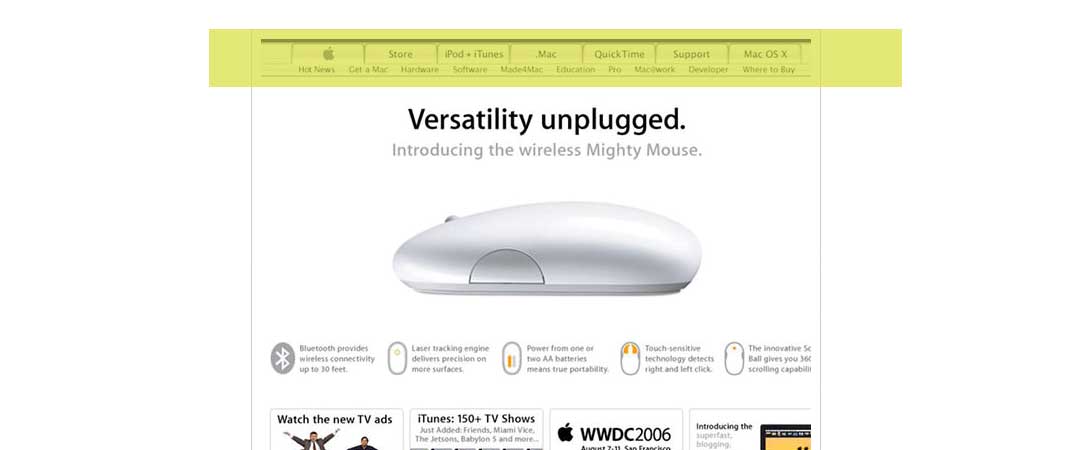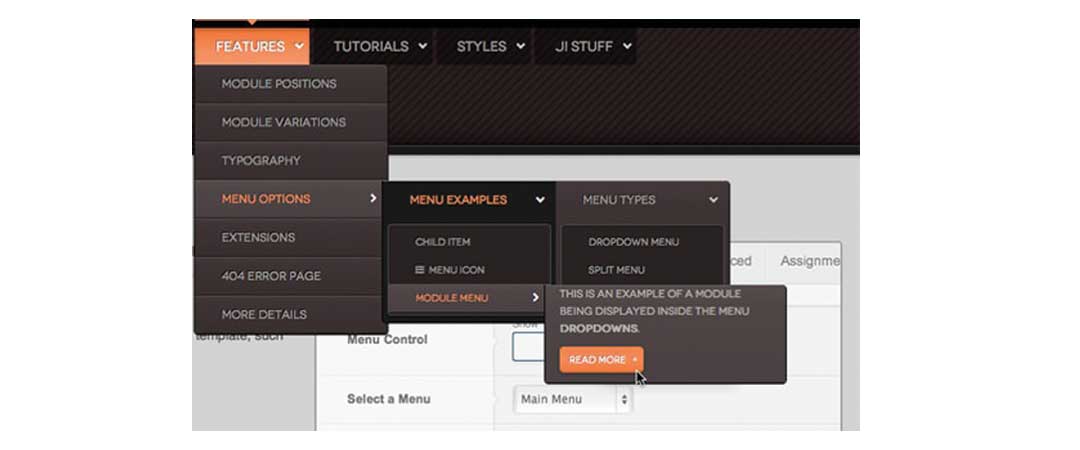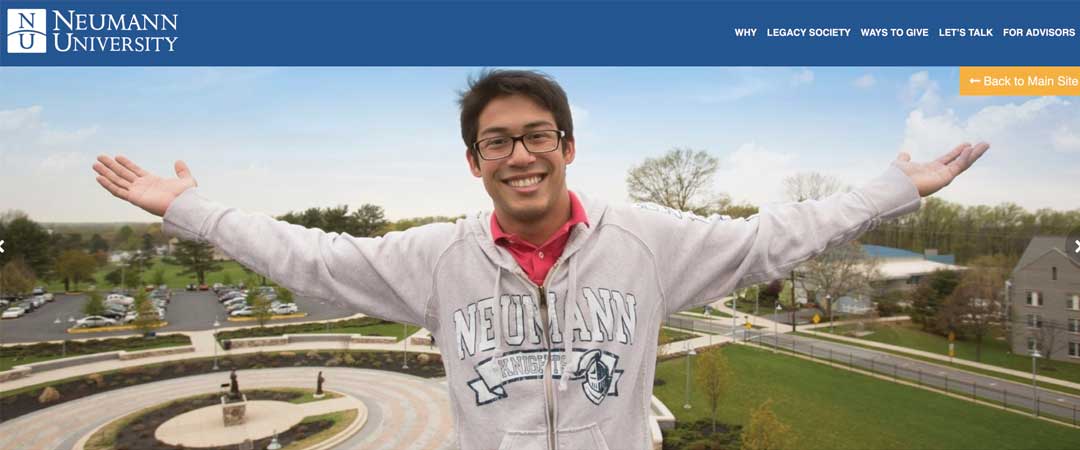Planned Giving Website Assessment
Let’s do a mini planned giving website assessment.
First, we’ll start by looking at how websites were used in the past, and how websites are used now.
Take a minute to look at this photo.
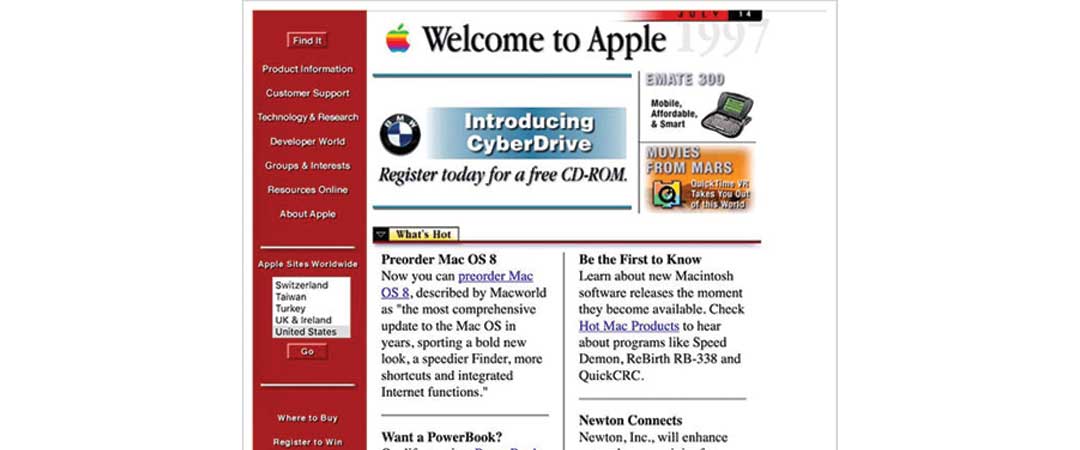
Does that look like a modern site?
No. Of course not. If you landed on that site, you’d think someone forgot to update it. You might even leave because you don’t trust an organization that would pay such little attention to their site.
This is a picture of an ooooold Apple site. There was a time when this type of site was enough. In those day, the dial-up days, the only requirement for a business or nonprofit was to HAVE a site.
The information highway passed right through our home or office—and it was important for a nonprofit to have an address on the route.
But times changed …
This next picture shows an “updated” site.
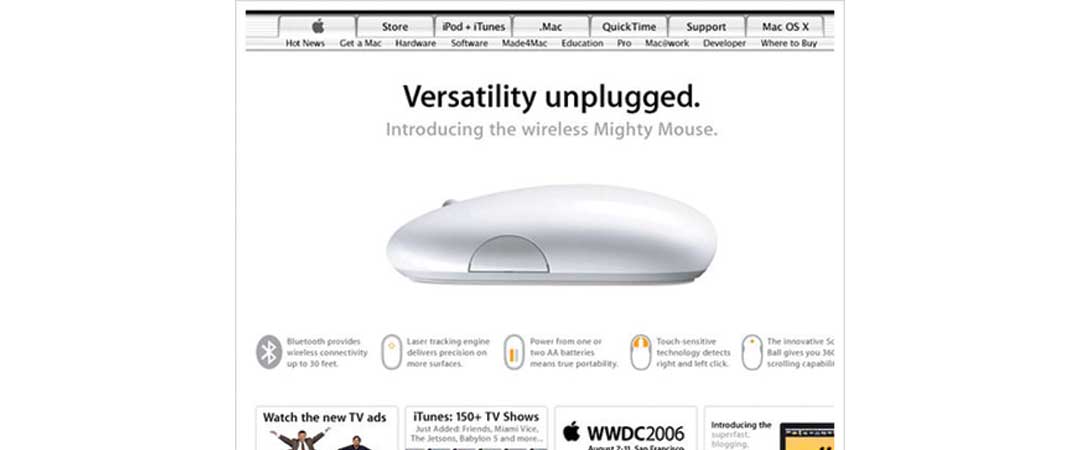
Now we’re getting somewhere. This design is easier on the eyes.
At this point websites were STUFFED with information. In response, many nonprofits compiled every bit of possible data they could find and uploaded it to their site.
Digital real estate was basically free, so why not make it as comprehensive as possible, right? Just in case.
After years of an information frenzy, websites have settled down. Finally, the WWW has enlisted the help of creatives. The result is a clean, uncluttered design that offers relief to the user. Sites now are design focused, user-friendly, and response. They look like this:
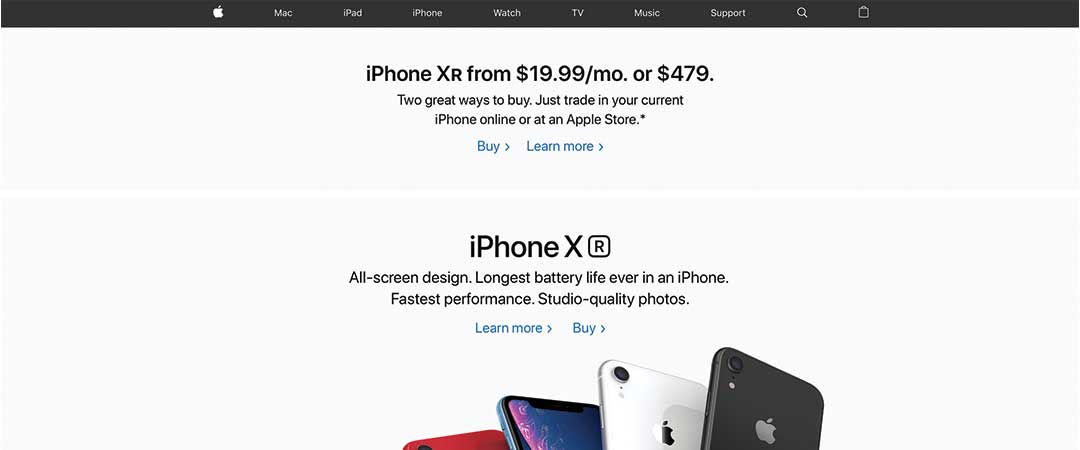
Today’s sites are built with the user in mind. They aren’t meant as an information depot. Sites are simple, clear, uncluttered, and responsive.
It’s absolutely essential for it to look good on any device–a phone, tablet, laptop or desktop.
HAS YOUR PLANNED GIVING WEBSITE STAYED CURRENT?
I have some good news and some bad news.
First, the bad news: if your planned giving website doesn’t meet the standards of today’s modern website, you’re going to look dated. And if your site looks dated, donors are going to think your information is dated—and they’re going to leave.
That’s called a “bounce” in web-speak, and it could cause nonprofits to lose opportunities to engage with their potential donors.
But we have good news: if your planned giving website looks dated, clunky, and cluttered, it’s simpler than ever before to fix it.
But before we get into how to fix your site. Let’s see if there’s a reason to:
TIME TO ASSESS YOUR PLANNED GIVING WEBSITE
How does your organization’s current planned giving website stack up against today’s standards? Be honest now …
THE DESIGN
Is your design clean or cluttered?
Imagine you see a sign in a bakery window that says FRESH HOT DONUTS. As you cross the sidewalk in front of the store, you’re approached by a waitress who hands you a flyer that lists the specials of the day. You try to listen, but you catch sight of a sign waver advertising the bakery’s hours. And, just as you focus on that, the owner of the store runs out to tell you a little bit “about us.”
You’d be so overwhelmed by the information overhaul, you’d forget all about the reason you came.
That’s what many planned giving websites do to their donors. Check your site for these common distractions:
- Too many options in the menu tabs
- Too many drop-down options in the menu tabs
- It’s not mobile friendly
Let’s take a look at these one at a time:
Too many options in the menu tabs
Look at the second example in the picture above. If a person comes to your site looking for information on planned giving, they may not know what they’re looking for. They are curious. They are interested. But they aren’t exactly sure if you have something they want.
When we welcome them with a menu bar that has too many options, it’s confusing.
And a confused mind always says no.
Too many drop-down options in the menu tabs
Oh. Sneaky. Your web designer decided to hide some of the information so that it isn’t confusing. But, there’s a problem with that plan. When your prospect scrolls over the menu, those drop-down pages catch the brain’s attention—and suddenly, he or she has an acute case of FOMO: FEAR OF MISSING OUT.
Those drop-down pages are waaayy too tempting for many people, and so they CLICK … and get buried in the details. Oh! (says the brain) there are multiple “Ways to Give”? I better read every. single. one. so I don’t miss anything.
It’s not long before your prospect is bored, confused, or distracted …
And your planned giving website actually set up a system where you lose an opportunity to engage.
It’s not Mobile First Indexing (MFI) Compliant
One of the most obvious indicators that it’s time to update your planned giving website is this: it doesn’t play well with others. That means the website isn’t “responsive” and won’t reformat itself to look beautiful on any device: desktop, laptop, tablet, or phone.
Did you know that more people get online via a tablet or phone (mobile device) than those who use the traditional desktop or laptop? (53%) And I’m talking about the mature audience! Make no mistake, grandma knows her way around an Ipad! Even if you didn’t know that, Google does … and Google punishes sites that aren’t compliant by burying them in the search.
If your planned giving website is built on an old design that doesn’t automatically convert into a scroll format that can be navigated with a thumb swipe, you can bet your prospects aren’t staying around.
And that means you just missed out on a chance to talk with them about planned gifts.
Ready to Update Your Planned Giving Website?
A new planned giving website gives you everything you need and nothing that you don’t! The clean, modern, responsive design make it easy for your donors and prospects to engage. Call now to get a PGMicrosite.
THE CONTENT
Common problems occur in the content as well:
- Too much information
- Too much too soon
- Too much legalese
- No call to action so readers are clear on the next step
Too much information
Have you ever found yourself listening to someone with genuine interest and then find your eyes glossing over as they start getting technical? That’s how some planned giving websites make prospects feel.
In the old days of the website, people were enamored with the availability of the information, so they would linger, peruse, and maybe even educate themselves. That’s the exception today.
Today, the digital age makes is so easy to get information that our brains are fatigued with info overload. Now, we consume information in bite-sized pieces so we avoid the feeling of being sprayed with a virtual garden hose of content.
When prospects feel overwhelmed, their brain looks for an escape hatch—and with a click, they jump off the cluttered planned giving website, and they’re gone.
Too much too soon
Imagine meeting someone new and before you introduce yourself or even talk about the mission of your organization, you start talking about money, taxes, the best ways to alter a will, and how much your organization benefits from planned gifts.
You wouldn’t do that in person. Why do it on your planned giving website?
Your planned giving website should be a beginning, an introduction to you, the members of the legacy society, and possibility for impact. The content on the planned giving site should be emotional, not technical. The stories should inspire, with personal language and real-life stories. The goal is to connect friends and supporters to an opportunity that benefits them and empowers them to advance a mission they love.
Too much legalese
The planned giving website has one job: to inspire prospects to contact you.
That’s it. It’s a tool to get your prospect to engage with you. Once they do, you can nurture a relationship and help them see the opportunity to build a legacy through your organization.
When you use templated or legal-heavy information on your planned giving website, it feels overwhelming, impersonal, and sterile.
And that makes prospects feel like you’re more interested in hearing about their resources for planned gifts rather than their reasons.
The ASK: Does a visitor know what to do next?
As you continue your planned giving website assessment, ask yourself: is there an opportunity on your planned giving website for your prospects to ask a question? Or does the site feel like a one-sided conversation?
It’s essential for your planned giving website to invite prospects to engage. Without an invitation to engage, they may leave without ever letting you know they’ve visited!
WHAT’S YOUR ASSESSMENT?
So, how did you do on the planned giving website assessment?
Congratulations if your website is doing its job! That’s great news for you, because that means you’re getting a steady stream of planned giving prospects looking to engage with your organization.
If you saw places for improvement, I have some really good news.
The solution is easier (and less expensive!) than you might think.
The PGMicrosite: A MODERN SOLUTION
In the past, planned giving websites were a huge investment in time and financial resources. Development directors and fundraisers felt trapped because they knew they needed a site, but the cost of one nearly drained their marketing budget.
And worse, once they built the site, they were often locked into a long, restrictive contract.
But a PGMicrosite™ changes all that. Now you can get a modern, effective planned giving website that actually does what it’s supposed to do: engage prospects.
A PGMicrosite™ gives you everything you need in a planned giving website—and nothing that you don’t.
The good news is it’s affordable to any budget.
The better news is your contract is renewed on a yearly basis, so you aren’t locked into a subscription.
The BEST news you can started engage donors with you new site in under 30 days.
Call (484) 680-7600 now to get started—or click here to schedule a call.
Get a new PGMicrosite in as little as 30 days.
A PGMicrosite gives you everything you need and nothing that you don’t so more donors and prospects engage. Call now to get a site and start engaging more donors.

70 ½ vs. 73?
70 ½ vs. 73? We’ve been hearing some confusion from a lot of clients around the age split of 70 ½ vs. 73 for gifting from an IRA. Which is the correct age? What are the rules around each age? When it comes to marketing this great gifting strategy, the problem is both...

Wisdom Wednesday – Are you 85?
Are you 85? I didn't think so ...We've talked about the mindset of our most senior donors in the past. And we'll most likely talk about it forever. Why? None of us know what it's like to be 85 - unless we're 85.We've all been 16 before. Most of us have even recovered...

Generational Marketing – Traditionalists
Generational Marketing - TraditionalistsTraditionalists include those aged 77+ and will be a key group when it comes to your planned giving outreach.Learning how to communicate with this portion of the population is important for your success. Discovering the nuances...
Tech Tuesday – IRS Discount Rate
IRS Discount Rate With the signing of the Consolidated Appropriations Act of 2023 and the provision referred to as Secure 2.0, there is newfound interest around Charitable Gift Annuities* (CGAs). Because of this we’re all becoming reacquainted with the IRS...

